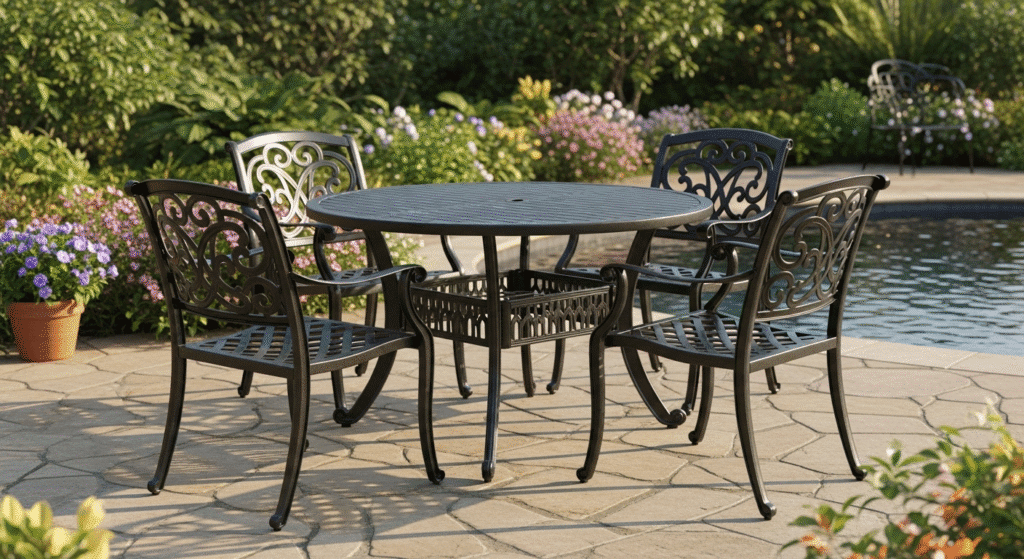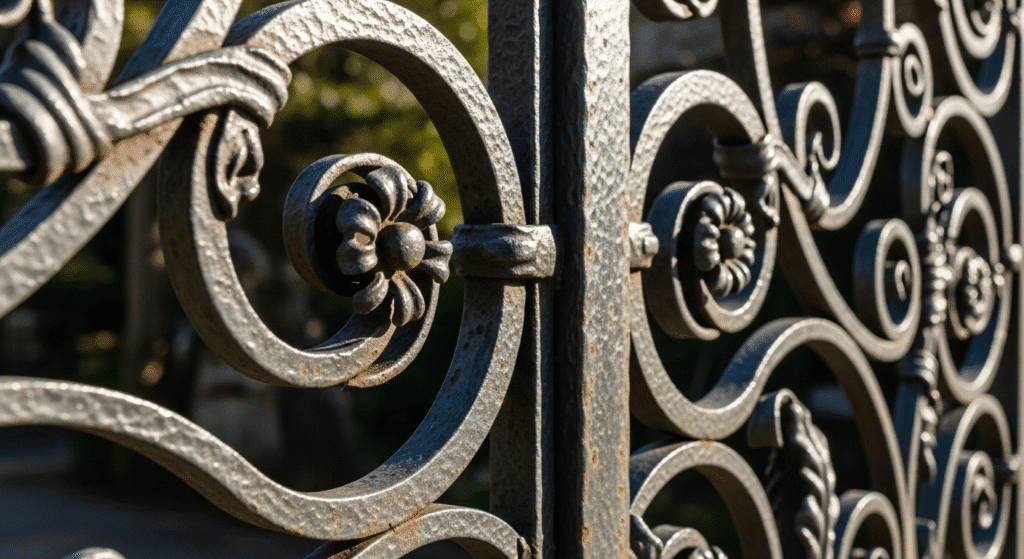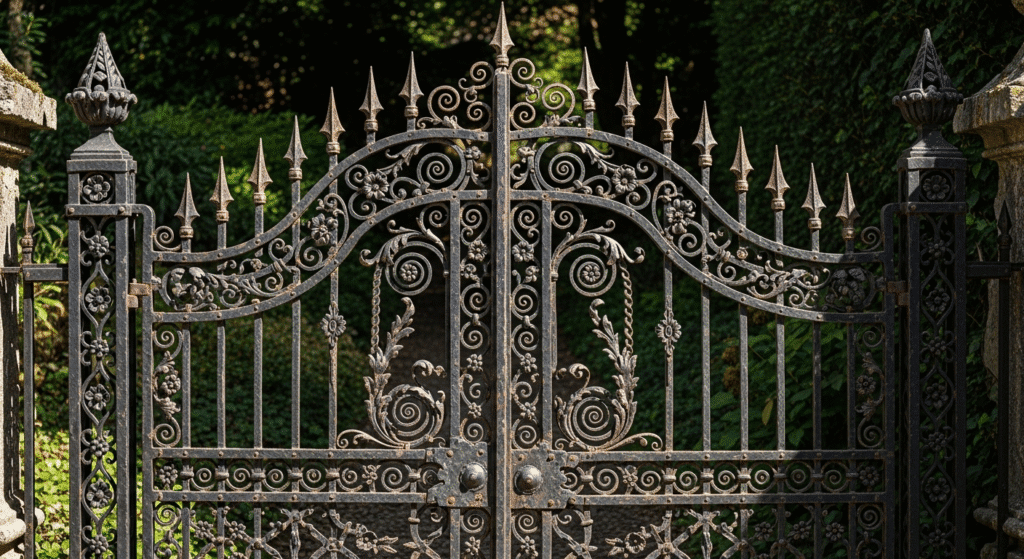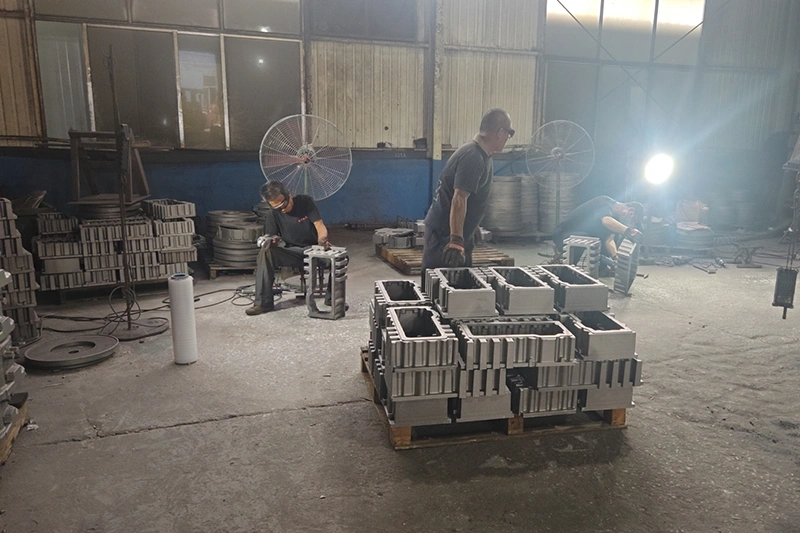Choosing between cast aluminum and wrought iron for your outdoor furniture, fencing, or decorative pieces comes down to understanding their key differences. Cast aluminum wins on weight, weather resistance, and low maintenance, while wrought iron offers superior strength and a classic, timeless appearance.

Cast aluminum is a lightweight metal that’s formed by pouring molten aluminum into molds. This manufacturing process allows for intricate designs and detailed patterns that would be difficult or expensive to achieve with other metals.
The material starts as pure aluminum mixed with other elements like silicon or magnesium to improve its properties. Once heated to about 1,220°F, the liquid metal flows into pre-made molds where it cools and hardens into its final shape.
What makes cast aluminum particularly appealing for outdoor use is its natural oxide layer. This invisible coating forms automatically when aluminum meets oxygen, creating built-in protection against rust and corrosion.
Wrought iron is nearly pure iron that’s been heated and worked by hand or machine to shape it. The term “wrought” literally means “worked,” referring to the traditional blacksmithing techniques used to form this material.
Unlike cast aluminum’s molding process, wrought iron gets shaped through hammering, bending, and twisting while it’s hot. This working process gives the metal its characteristic grain structure, similar to wood grain, which actually makes it stronger.
Modern “wrought iron” furniture and fixtures are often made from mild steel instead of true wrought iron. Real wrought iron became rare after the 1960s because it’s expensive and time-consuming to produce.

Cast aluminum weighs about one-third as much as wrought iron, making it the clear winner for portability. A typical cast aluminum patio chair weighs 15-20 pounds, while the same chair in wrought iron weighs 45-60 pounds.
Wrought iron typically comes in black or dark colors that highlight its traditional appeal. Cast aluminum accepts a wider range of powder-coated colors and can even mimic the look of aged bronze or copper.
Wrought iron is significantly stronger than cast aluminum and can support more weight. A wrought iron bench can easily hold 600-800 pounds, while a similar cast aluminum bench typically supports 250-350 pounds.
Cast aluminum never rusts because it doesn’t contain iron. Instead, it forms a protective oxide layer that actually strengthens over time, making it virtually maintenance-free in terms of corrosion.
Wrought iron will rust without proper protection. Even with quality paint or powder coating, any scratch or chip that exposes the bare metal will start the rusting process.
Cast aluminum handles all weather conditions exceptionally well. It won’t crack in freezing temperatures, warp in extreme heat, or deteriorate from UV exposure.
Wrought iron is also weather-resistant when properly maintained, but it requires more attention. The protective coating needs regular inspection and touch-ups to prevent rust from taking hold.
Cast aluminum needs almost no maintenance beyond occasional cleaning with soap and water. You might want to apply car wax once a year to keep the finish looking fresh, but even this is optional.
Wrought iron requires regular maintenance to prevent rust. This includes inspecting for chips or scratches, sanding down any rust spots, applying primer, and repainting affected areas.
Every 3-5 years, wrought iron furniture typically needs a complete refinishing. This involves stripping the old finish, treating any rust, applying primer, and adding new paint or powder coating.
Cast aluminum furniture typically costs 20-40% more than wrought iron initially. A quality cast aluminum dining set might run $1,500-3,000, while a comparable wrought iron set costs $1,000-2,000.
However, the long-term costs tell a different story. Factor in the maintenance supplies, professional refinishing, and potential replacement due to rust damage, and wrought iron often becomes more expensive over 10-15 years.
The resale value also differs between the two. Well-maintained wrought iron pieces, especially antiques, can hold or increase in value. Cast aluminum typically depreciates like most outdoor furniture.
Cast aluminum dominates the patio furniture market because it combines durability with easy handling. You’ll also find it in decorative garden pieces, mailboxes, and light fixtures.
Pool furniture is almost always cast aluminum since chlorine accelerates iron corrosion. The material’s lightweight nature also makes it perfect for balcony furniture where weight limits matter.
Wrought iron remains popular for security applications like gates and fencing where its strength provides real protection. Interior designers love wrought iron for stair railings, bed frames, and decorative accents that add Old World charm.

Cast aluminum typically lasts longer outdoors with minimal care. While both materials can last decades, aluminum’s rust resistance gives it the edge, especially in humid or coastal environments where wrought iron requires frequent maintenance.
Cast aluminum can break if subjected to extreme force or dropped, but it’s quite durable for normal use. The casting process can sometimes create weak points, but quality manufacturers use thick walls and reinforced stress points.
Wrought iron is worth it if you love the classic look and don’t mind regular upkeep. Many people enjoy the ritual of maintaining their iron pieces and consider the authentic appearance worth the extra effort.
Wrought iron performs better in windy areas due to its heavier weight. Cast aluminum furniture may need to be anchored or brought inside during strong winds, while wrought iron pieces typically stay put.
Yes, cast aluminum can be painted with a black or dark finish to mimic wrought iron’s appearance. Many manufacturers offer “faux iron” finishes that provide wrought iron’s look without the weight or maintenance requirements.
Both materials are environmentally friendly since they’re fully recyclable. Aluminum requires more energy to produce initially, but its longer lifespan and lower maintenance needs often make it the greener choice overall.

